Australian Pain Society Newsletter



Hello and welcome to another edition of our newsletter. We’re delighted to bring you a new collection of articles, updates, and insights. I hope you find them engaging and informative.
Before diving into the content, I’d like to draw your attention to a few key highlights:
• Important Dates Reminder: Please take note of upcoming deadlines.
• Nominations Open: Consider nominating a colleague for the Rising Star and Distinguished Member awards.
• 2026 Annual Scientific Meeting (ASM) – Adelaide: Abstract submissions and registrations are now open. We strongly encourage you to attend, present, and participate in this flagship event.
In this issue:
• Travel Grants Reflections: Katelyn Jauregui and Most Sumaiya Khatun Kali share how travel grants enriched their understanding of pain and offer insights from the Melbourne ASM.
• painSTAR Feature: Cristy Brooks provides an excellent overview of how painSTAR fostered new collaborations for her as well as reignited her passion for researching inflammationmediated pain pathways and the antiinflammatory effects of exercise.
• Global Year Focus: A summary of the IASP fact sheet Pain in Indigenous Peoples from Colonised Countries, with a focus on sections relevant to Australia. Meet the team behind this important work and learn about their backgrounds.
• Brain Pain Research (BPR) Hour: Upcoming webinars include:
– Consumer Engagement Research with Mr Michael Ebrey and Dr Luke Grundy – Wednesday 29 October, 3:00pm.
– Spinal Cord Signalling and Proteomic Profiling in Chronic Pain – Wednesday 26 November, 1:00pm, featuring Professor David Spanswick and Associate Professor David Mahns.

• OPEN Program Flyer: Learn more about the Online Pain Education Network (OPEN), designed to train healthcare professionals and build confidence in managing chronic pain. Details on registration are included.
• Pain in Childhood Special Interest Group: Four interesting studies are featured, exploring:
– Harmful words (qualitative study)
– Motor proficiency delay and chronic pain
– Gender diverse experiences of chronic pain (qualitative study)
– Children’s understanding of pain through poetry (qualitative study)
• Recent Publications: – Somatotopic Organisation of Brainstem Analgesic Circuitry by Dr Lewis Crawford and colleagues.
– Pharmacotherapy and Non-Invasive Neuromodulation for Neuropathic Pain: A Systematic Review and Meta-Analysis by Mr Michael Ferraro et al.
Congratulations to Lewis and Michael on their outstanding contributions!
Finally, we’d like to draw your attention to the below surveys that are currently open:
• Blended pain care (survey for psychologists who work with pain and distress)
• Sleep disturbance and pain (for health professionals to complete)
• Whiplash classifications (for health professionals to complete)
• Medicinal cannabis and lower back pain
We look forward to seeing your contributions and participation in future Newsletters as well as the ASM and beyond.
Enjoy the warm spring weather.
Kylie

Tuesday 7 October 2025
Rising Star Award Applications Close
Tuesday 28 October 2025
Free Paper/Poster Abstract Submissions Close
Tuesday 18 November 2025 Registrations Open!
Sunday 30 November 2025 All Travel Grant Applications Close
APS 2026 will be held from 19 - 22 April 2026 at the Adelaide Convention Centre, SA
Please visit the conference website here: www.dccam.com.au/aps2026
Complete the Expression of Interest form to be kept up to date with conference news as it becomes available.
If you have any questions, please contact the APS Conference Secretariat

This award showcases rising star pain researchers in Australia. The Rising Star may be awarded annually, subject to the application of suitable candidates.
The Rising Star winner will receive a return domestic airfare, accommodation, and complimentary registration to attend the 46th Annual Scientific Meeting. At the ASM the Rising Star will give a plenary presentation to showcase their work and ideas.
The deadline for Rising Star Award submissions is: Tuesday 7 October 2025
Please click here to view the Rising Star Award Submission Guidelines.
To submit an application, please complete the form online here.
Should you have any queries regarding your submission or the process, please contact the Conference Secretariat
We look forward to receiving your submission.

Submissions close: 11:59pm AEDT, Tuesday 28 October 2025
On behalf of the Scientific Program Committee and the Local Organising Committee, we are pleased to advise that abstract submissions for Australian Pain Society (APS) Annual Scientific Meeting (ASM) 2026 are now open.
Please note the following points regarding the submission process:
• If your abstract is accepted, either as a free paper or poster, there is an expectation that you will attend the conference to present this abstract
• Expressions of Interest (EOI) for travel grant applications are also being collected as part of the submission process
• The submitting author MUST be the main author and the person who will present the work at the ASM
To view the abstract submission guidelines please click here. There are THREE categories for Abstract Submissions. Please visit the links below
Experimental Studies & Clinical Trials Abstract Guidelines
Clinical Practice & Service Delivery Abstract Guidelines
Case Reports Abstract Guidelines

Delegates wishing to apply for a travel grant must be the major contributor and submitting author of the abstract. Only delegates who have ticked 'yes' to the Travel Grant section of the abstract submission process AND completed the associated application form will be considered.
There are two travel grant opportunities available for APS Members. For further information on available APS travel grants and eligibility, please refer to the following webpages: Travel Grants
Professor Michael Cousins AO Travel Grant - Allied Health Professionals only
We look forward to receiving your submission.
Should you have any queries regarding your submission or the process, please contact the Conference Secretariat

Secure your spot early and join us at Australia’s leading multidisciplinary pain management conference. It is the only event that brings together experts from medical, nursing, research, and allied health. Together, we offer expert insights and innovation for managing the complex nature of chronic pain.
Complete the Expression of Interest form to be kept up to date with conference news as it becomes available.
Become a member and save on your Australian Pain Society (APS) 2026 registration fee!
Early Bird Register before 24 February 2026
Non-Member Registration Price VS
Becoming an APS Member
$1,495 OR
Being a member saves you up to $540 after membership fees!
APS Student Member Registration Price Only $300 Being a member saves you $1,195 after membership fees!
Tell your colleagues who are interested in becoming members so they can save on their registrations too!
Become an APS Member and start saving straight away!
Should you have any queries about the conference, please contact the Conference Secretariat

The Board of Directors is seeking nominations from all Australian Pain Society (APS) members for candidates to be considered for the Distinguished Member Award(s). The award will be presented to the recipient at the APS 46th Annual Scientific Meeting (ASM) in Adelaide (19 - 22 April 2026).
Eligibility criteria:
Candidates must be APS members who have had a lengthy career in the field of pain and:
• Made major contribution1 towards the Society, and
• Significantly contributed to the science of pain management, and/or
• Played a significant clinical, educational or research role in the field of Pain Management in Australia
1 Major contributions include, but are not limited to:
• Scientific Program Committee involvement
• Pain research
• APS projects
• Subcommittee involvement
• Board liaison
• Contributions to ASM presentations
Nomination Guidelines:
• A ‘Nomination for Distinguished Member Award’ form must be completed.
• It is desirable that nominees have held continuous APS membership for over 10 years.
• Nominations must include an 800-900 word biography of the nominee. The Board will not consider incomplete nomination forms.
• Unsuccessful nominations are not automatically carried over to subsequent years. A new submission is required for each nomination cycle.
• The nominator must be prepared to present a brief summary of the Distinguished Member biography in the ASM program, or arrange a suitable alternate for the presentation segment.
Submission
• All nominations to be submitted to the APS Secretariat by 31 October 2025.
Notification:
• The APS Board will notify successful nominees by 31 December 2025
• Distinguished Member recipients are actively encouraged to attend the Annual Scientific Meeting in order to receive their award in person from the APS President.
The nomination form and a listing of past recipients of the Distinguished Member Award, including their biographies, can be found on the APS website.

The Australian Pain Society (APS) is pleased to announce the availability of several Travel Grants for members to present their research at our Annual Scientific Meeting (ASM).
Travel Grants are awarded as follows:
• PhD students (up to the value of $500)
• A single dedicated Travel Grant for a Pain in Childhood (PinC) SIG member ($500)
• A single dedicated Travel Grant for a Basic Pain Research (BPR) SIG member ($500)
• If funds permit, further travel grants may be offered to nurses, allied health professionals, and other post-graduate students.
This Travel Grant program is designed to encourage contribution to, and participation in the ASM, and is made possible through an allocation of a capped pool of APS operating funds.
Full eligibility criteria and Terms and Conditions are available on the Travel Grants webpage.
Professor Michael Cousins AO Travel Grant
In honour of Professor Michael Cousins AO, the APS is pleased to announce a single, dedicated Travel Grant for an Allied Health Practitioner (AHP) member to present their research abstract at our Annual Scientific Meeting (ASM).
The Professor Michael Cousins AO Allied Health Practitioner Travel Grant includes:
• Complimentary ASM registration at the relevant early bird rate
• $500 towards ASM travel and accommodation expenses
To be considered for any Travel Grant:
a. an EOI for a Travel Grant must be indicated when your abstract is submitted; AND
b. a Travel Grant Application form must be submitted to aps@apsoc.org.au by 5pm AEDT on 30 November 2025 – no exceptions.
Katelyn Jauregui
Katelyn is a clinical pharmacist and PhD Candidate at the University of Sydney, researching safe opioid use around surgery. She has published in this topic area in both national and international peer-reviewed journals and is Chair of the Pain Management Leadership Committee of Advanced Pharmacy Australia.
Receiving the Australian Pain Society (APS) Travel Grant allowed me to attend the 2025 APS Annual Scientific Meeting (ASM) in Melbourne from 13-16 April. The grant made it possible for me to participate in the full program, including the pre-conference workshop, and to present my research to a national audience of pain clinicians and researchers.
I presented a poster titled “Patient perspectives and experiences of pharmacist-partnered opioid tapering prior to total hip or knee arthroplasty: A nested qualitative study” (DOI: 10.1016/j.jpain.2025.105417). This study highlighted the importance of a personalised and empathic approach to opioid tapering, with participants reporting that they felt heard, supported, and empowered to manage their medication through pharmacist-led education and care. During the poster sessions, I had the opportunity to discuss the research with clinicians and researchers, all of whom showed genuine interest and asked thoughtful questions. These conversations helped me reflect on the broader impact of the work and its relevance in clinical practice.
This was the second APS ASM I have attended, but it was the first time I was able to be part of the full conference experience, including the acute pain pre-conference workshop. That workshop was a highlight, providing valuable insights into current challenges and emerging approaches in opioid prescribing and postoperative pain management, which directly relates to my PhD. It was encouraging to hear
about the range of initiatives being implemented in hospitals and the shared commitment across disciplines to improve patient outcomes.


A particularly memorable moment was meeting the immediate past president of the APS. Her warmth and encouragement, along with her clear passion for advancing pharmacists’ involvement in pain management, made a lasting impression on me. It highlighted the valuable contribution pharmacists can make in pain management and the growing recognition of their role within multidisciplinary teams.
The APS conference also created valuable opportunities to connect with other researchers and clinicians working in similar spaces. These conversations opened the door for potential collaborations and strengthened ties with colleagues involved in our ongoing clinical trial.
As a PhD candidate researching opioid use around surgery, it was energising to attend a conference where nearly every session felt relevant and inspiring. I am already looking forward to next year’s meeting and the opportunity to keep learning, sharing, and contributing to this important field.
I am deeply grateful to the Australian Pain Society for supporting my attendance. The Travel Grant enabled me to share my work, build connections, and gain insights that will shape the next stage of my research and career.
Declaration: Katelyn Jauregui is supported by a University of Sydney RTP Stipend Scholarship.
Most Sumaiya Khatun Kali
Sumaiya is currently a PhD student at The University of Queensland (UQ), with research interests focused on the discovery and pharmacological evaluation of novel analgesics for the relief of Ross River Virus-induced chronic pain.
Moments at APS 2025
Receiving the Travel Grant was pivotal in allowing me to attend the Annual Scientific Meeting (ASM) of the Australian Pain Society (APS). Without this support, meeting the costs of travel, accommodation, and registration would have been difficult. The grant gave me the opportunity to connect with leading researchers and clinicians in pain management, participate in valuable workshops, and present my research to a national audience. This experience significantly enriched my professional development, expanded my academic network, and deepened my understanding of current trends and innovations in pain science.
At the ASM, I presented my research as a free paper speaker, titled “Discovery and Pharmacological Evaluation of Novel Analgesics for the Relief of Ross River Virus-Induced Chronic Pain.” My presentation focused on developing a model for RRV-induced pain and exploring potential treatments.
I was also given the unexpected but valuable opportunity to compete in the Three Minute Thesis at the Basic Pain Research (BPR) Special Interest Group (SIG) pre-conference workshop (PCW). This opportunity allowed me to showcase my findings to a broader audience.
The feedback was highly encouraging. Attendees showed strong interest in the pain behaviour findings, and their insightful questions sparked meaningful discussions that offered new perspectives for future research. Overall, the positive response reinforced the relevance and potential impact of my work within the broader pain management community.
This was my first APS ASM. Compared to other symposiums, it stood out for its multidisciplinary focus and strong integration of research and clinical practice. The diverse presentations fostered meaningful cross-specialty exchange. The collegial, inclusive atmosphere made networking easy, and many sessions addressed practical challenges in pain assessment and treatment. Overall, it was an intellectually stimulating and professionally rewarding experience.

One person who made a lasting impression was someone I met during a poster session. Her deep knowledge and passion for integrating molecular approaches into pain management stood out. Our conversation gave me fresh perspectives on better incorporating cognitive-behavioural strategies into multidisciplinary care. She generously shared practical advice from her clinical experience. The exchange was inspiring and opened the door to potential collaboration. Yes, I had several valuable conversations with researchers sharing similar interests and collaboration potential. While no single connection stood out, these discussions opened doors for joint work to expand my research’s impact. I have followed up with a few contacts and remain hopeful some will lead to formal collaborations. My favourite session was on migraine management and treatments, which deepened my understanding and challenged my approach to this complex pain. I also enjoyed the Three Minute Thesis competition, where attendees shared diverse pain models in a concise, engaging way—a great display of interdisciplinary thinking and communication. What I am most looking forward to about returning to the APS ASM next year is reconnecting with the professional community I began building this year and continuing to learn from leading researchers and clinicians in the pain field. The conference’s multidisciplinary nature fosters a rich environment for collaboration and the exchange of ideas. I am also excited to present updated findings from my current research and receive constructive feedback to help refine my work. Most importantly, I look forward to staying informed about emerging innovations in pain science and translating those insights into clinical or academic practice to improve patient outcomes.
Declaration: I would like to sincerely thank my advisory team—Emeritus Professor Maree Smith AC, Professor Kate Schroder, Associate Professor Lara Herrero, Dr Andy Kuo, and Dr Mohammad Zafar Imam—for their invaluable guidance and support. My work is funded by an international PhD scholarship from UQ, with additional funding for this study provided by the NHMRC. The Centre for Integrated Preclinical Drug Development (CIPDD) receives financial support through the National Collaborative Research Infrastructure Strategy (NCRIS) via Therapeutic Innovation Australia, alongside co-investment from UQ and the Queensland Government.

Dr Cristy Brooks
Dr Cristy Brooks is an Associate Lecturer at the School of Health Sciences, Western Sydney University. Her research focuses on the intersection of chronic pain and chronic disease, with a particular focus on inflammation-mediated pain pathways and the anti-inflammatory effects of exercise.
What drew me to attending painSTAR initially was a desire to connect with other pain researchers and to acquire new knowledge and skills related to the field. I had felt a bit isolated in my area of research for a while and wanted to meet other people with a passion for chronic pain research. I was also excited by the idea of getting to spend some extended time on professional development and networking that was specifically designed for those early in their academic careers. I thought it would be a great opportunity to learn from experts in the field, rekindle my passion for pain research with like-minded people and enjoy a more intimate ‘conference’ setting. I had heard really good things about painSTAR from a previous attendee, so I had high hopes about it. And it did not disappoint!
What I did not expect to get out of it were friendships. I came expecting to learn and network, but the connections



I made with people were genuine and beautiful. There was such a wonderful variety of individuals that attended. It was not a large group, so it was quite close-knit by the end, which really made the whole event special. I have very fond memories of my time at painSTAR. Not to mention that the setting was absolutely stunning. I had never been to the Barossa Valley before and the venue, food and whole set-up there were just wonderful. It is an incredibly beautiful place and as a nature lover, I thoroughly enjoyed the stunning backdrop we had the privilege of seeing every day we were there.

Truthfully it was a tiring and action-packed few days, but it was brilliant. I loved the mix of fun and solid learning – the organisation involved in running the event was fantastic and workshops discussing things like the lived experience and imposter syndrome were very impactful.
I came back feeling excited and rejuvenated about my area of research and was keen to continue
working on some new collaborations. It really got my ‘brain juices’ flowing again, which was amazing and much needed at the time. It is early days yet, but there are definitely a few things in the works as a result of painSTAR connections. I also happened to bump into one of my fellow painSTAR alumni at another conference recently, and it was like catching up with an old friend – it was wonderful!
I am incredibly grateful for the opportunity I had to attend painSTAR. It was the first event I had attended interstate and away from my husband and kids for a long time, so it felt significant for me. I relished and appreciated
BLOG WEB
such a wonderful opportunity. The connections I made have been long-lasting and I cannot wait to continue catching up at future APS conferences. I also look forward to forging these new research collaborations as a result. I am pleased to say that I am now part of the special painSTAR alumni club – a club that I am incredibly honoured, privileged and grateful to be a part of!
Declaration: Cristy Brooks received funding from an Early Career Research Fellowship 2024 at Western Sydney University for research and professional development purposes, which enabled her to attend painSTAR 2024.




o
This study aims
This study aims to gather insights into how the current QTF WAD classification system is being used, as well as explore opportunities for improvement. The survey will take approximately 10 minutes to complete; your perspective would be incredibly valuable to this study and future patients’ care.
Who Can Participate:
Who Can Participate:
o Practitioners / clinicians
o Practitioners / clinicians
o Researchers (any discipline) whose research is related to WAD
o Insurance personnel (e.g., case manager, clinical panel)
o Researchers (any discipline) whose research is related to WAD
o Insurance personnel (e.g., case manager, clinical panel)
o People with lived experience of whiplash injury, WAD, or their family/carers

2025 Global Year
For more information
Australian Pain Society www.apsoc.org.au
New Zealand Pain Society www.nzps.org.nz
Faculty of Pain Medicine, Australian and New Zealand College of Anaesthetists www.fpm.anzca.edu.au
International Association for the Study of Pain (IASP) www.iasp-pain.org



the author group of the International Association for the Study of Pain (IASP) Factsheet “Pain in Indigenous Peoples from Colonized Countries” (see: https://www.iasp-pain.org/resources/ fact-sheets/pain-in-indigenous-peoples-fromcolonized-countries/ relevant to the Australian context.

health professionals working in public hospitals, and their connection to cultural safety and workforce retention.

Brooke Conley is a Ngiyampaa woman, physiotherapist and postdoctoral research fellow, based in Naarm on Wurundjeri Country. She has research expertise in musculoskeletal conditions, with a particular focus on improving outcomes and care for Indigenous peoples.

Ivan Lin
Ivan Lin is a non-Indigenous specialist musculoskeletal physiotherapist, researcher and educator who lives and works on Yamaji Country in Jambinnu/Geraldton, coastal Western Australia.

Jane Linton is a Gumbaynggirr woman living on Country on the north coast of New South Wales, Australia. She is an early career researcher and has over 20 years of clinical experience as a physiotherapist in the public health system.

Blayne Arnold is a proud descendant of the Ngemba Peoples, a physiotherapist, researcher and lecturer at Griffith University on Yugambeh and Kombumerri lands. He has experience as a conjoint between First Nations Way of Knowing, Doing and Being and a Western model of education and research.

Jenny Setchell (they/them) is a nonIndigenous person born on unceded Wadjuk Nyungar Country and now living and working in Turrbal and Yuggera Country in so-called ‘Australia’. They are an adjunct Senior Research Fellow at the University of Queensland and a full time Senior Researcher at the Institute of Urban Indigenous Health.
Despite Australia’s universal healthcare system, Aboriginal and Torres Strait Islander peoples (henceforth respectfully Indigenous) experience significant disparities in pain care (1). These inequities are deeply rooted in the ongoing impacts of colonisation, which include historical trauma, land dispossession, systemic racism, and marginalisation (2).
• Is there adequate funding for Indigenousled, implementation-oriented pain research that fosters innovation and drives health care improvement?
2. Health Systems and Services
Health systems and pain management services can support pain management for Indigenous people by:
BLOG WEB
Indigenous worldviews about wellbeing and health are holistic and emphasise health within broader relationships to kin, ancestors, land, and spirit, including wellbeing of Country and Community. Indigenous holistic worldviews predate the biopsychosocial model of health and pain.
This raises the question of how the inherent strengths, knowledges and practices of Indigenous peoples and Communities can be harnessed to improve pain outcomes when many mainstream pain services have historically excluded Indigenous philosophies?
Pain care for Indigenous peoples can be improved by addressing multiple levels: societal, health systems, and clinical practice.
Pain clinicians and policy makers should be aware of the upstream determinants of Indigenous health that also impact on pain. A key determinant is the relationship between non-Indigenous and Indigenous peoples. Considerations include:
• Are there formal agreements between Indigenous and non-Indigenous peoples? An international exemplary is the Te Tiriti o Waitangi (Treaty of Waitangi) in Aotearoa New Zealand (3).
• What truth-telling and reconciliation activities have been undertaken, and have they been enacted successfully? An international exemplary is the Truth and Reconciliation Commission from Canada (4), that developed 94 Calls to Action, including incorporating Indigenous healing practices in the treatment of Indigenous patients.
• What Indigenous self-determination and Indigenous leadership exists within societal, political, and health contexts, such as Aboriginal Community Controlled Organisations (ACCOs)? ACCOs play a vital role in delivering culturally safe care and should be central to pain service design and delivery.
• Developing strengths-based, culturally integrated models: Pain services should incorporate Indigenous healing practices and philosophies. For example, arthritis information resources co-developed with Aboriginal Communities have successfully integrated clinical guidelines with cultural knowledges (5).
• Embedding services within ACCOs: Locating pain services within Indigenous-controlled organisations enhances accessibility and cultural safety.
• Increasing the Indigenous pain workforce: There is a critical need to recruit and support Indigenous clinicians across all levels of pain care. Educational institutions must implement policies to ensure equitable access to training and career pathways.
• Addressing systemic barriers: Health systems must adopt culturally safe, relational, and antiracist approaches. This includes recognising racism as a determinant of health and providing mandatory cultural safety training for all staff.
• Improving pain measurement tools: Common pain assessment tools may not be valid for Indigenous populations. Culturally appropriate tools are needed to ensure accurate and meaningful evaluation.
3. Clinical Practice
Indigenous and non-Indigenous clinicians can enhance outcomes for Indigenous people with pain by developing their knowledge, skills, and practices. Key considerations for clinicians are:
• Develop person/family/Community-centred skills in pain care, including clinical communication skills such as including deep listening, narrative/ storytelling, and explaining pain using culturally appropriate methods. An example of personcentred communication in Indigenous health care is Clinical Yarning (6).
• For non-Indigenous clinicians especially, undertake training in cultural responsiveness, safety, security, or related concepts. Training should begin with critical self-reflection and an understanding of one’s own cultural perspective and internal biases, and then understanding
local Indigenous ways of knowing, being, and doing (7). Incorporate Indigenous cultural knowledge into practice, e.g., appropriate decision making that may involve family members, using local words/phrases if suitable.
• Value strong and trusting relationships with Indigenous peoples and Communities.
• Trusting relationships between patients and clinicians must be a primary goal of practice.
• For non-Indigenous pain clinicians, strive to be an ally and advocate, recognising that allyship is a critical lifelong practice and process rather than an outcome or identity, and involves nonIndigenous and Indigenous peoples acting together to improve pain outcomes. This involves recognising and calling out racism within and beyond the workplace. Mutually supportive relationships between nonIndigenous and Indigenous colleagues that recognise the likely added burden of colonial load for Indigenous staff are critical.
Conclusion
Indigenous-led solutions at societal, health system/ service, and service delivery levels can help foster fair and equitable outcomes for Indigenous peoples. Especially for those who are living with pain, as well as improve pain care for all people.
Declarations
Brooke Conley, Ivan Lin, Jane Linton and Jenny Setchell have undertaken work funded by Arthritis Australia. Blayne Arnold and Ellie White have no funding or conflicts of interest to declare.
References
1. Lin IB, Bunzli S, Mak DB, Green C, Goucke R, Coffin J, et al. Unmet Needs of Aboriginal Australians With Musculoskeletal Pain: A Mixed‐Method Systematic Review. Arthritis Care Res. 2018;70(9):1335-47.
2. Paradies Y. Colonisation, racism and indigenous health. Journal of Population Research. 2016;33(1):83-96.
3. Manatu Hauora - Ministry of Health. Te Tiriti o Waitangi framework Wellignton, Aotearoa New Zealand2024 [Available from: https://www. health.govt.nz/maori-health/te-tiriti-o-waitangiframework.
4. National centre for truth and reconciliation. Truth and reconciliation commission Winnipeg: University of Manitoba; 2019 [Available from: http://nctr.ca/reports.php.
5. Conley B, al. e. A mixed methods study: Integrating evidence from Aboriginal peoples’ lived experience and clinical practice guidelines to develop arthritis education resources. The Lancet Rheumatology. 2024.
6. Lin I, Green C, Bessarab D. ‘Yarn with me’: applying clinical yarning to improve clinician–patient communication in Aboriginal health care. Aust J Prim Health. 2016;22(5):377-82.
7. Martin K, Mirraboopa B. Ways of knowing, being and doing: A theoretical framework and methods for indigenous and indigenist re‐search. Journal of Australian studies. 2003;27(76):203-14.

Wednesday 29 October 2025, 3-4pm AEDT (via Zoom)

The purpose of our Basic Pain Research Special Interest Group (BPR SIG) is to share, improve, and promote scientific knowledge and understanding of the mechanisms of nociception and pain. Our focus spans all levels of investigation, from molecular and cellular analyses to preclinical and clinical research.
This forum will provide an informal platform to promote and share our research and insights, from early career researchers (ECRs) (including students) and senior colleagues.
BLOG WEB
Session 14: Consumer Engagement in Research
Summary:
In pain research, consumer engagement is essential to ensure that studies address the realities and what matters most to people living with pain. This session explores how researchers and consumers can collaborate to shape priorities, co-design studies, and translate findings into meaningful change, while building trust, relevance, and impact.
Join us for an engaging session featuring two presentations:
Consumer Advocacy perspective on engaging with researchers
Mr Michael Ebrey, a longstanding patient at the Flinders Medical Centre Pain Management Unit, who has lived experience with chronic pain. Michael also has extensive experience working with consumers. As a consumer representative, he has given talks to nurses/police on bloodborne viruses, facilitated support groups, and sat on Workcover committees to provide patient experience. He is currently a Consumer Advocate on a biomarker project looking to develop a blood test for the diagnostic assessment of chronic pain conditions.
If Mr Ebrey is unavailable an equally suitable consumer representative will join us.
The Consumer Connection: Building and Sustaining Partnerships in Research
Dr Grundy, a mid-career discovery scientist, and head of the NeuroUrology Research Group and Ralph Ernst Fellow in Bladder/Prostate Cancer at Flinders University. Dr Grundy’s research is at the intersection of neuroscience, urology, and oncology, where he seeks to identify novel therapeutic targets and develop the next generation of treatments for debilitating bladder pain associated with the side effects of treatment for cancer. He has secured over $2 million in research funding and published 50+ peer-reviewed works, including in Nature, Pain, JCI Insight, Scientific Reports, and the American Journal of Physiology.
The invited speakers:
• Mr Michael Ebrey, Adelaide, Flinders Medical Centre Pain Management Unit, SA, Australia
• Dr Luke Grundy, Flinders University, Adelaide, SA, Australia
All are welcome to attend, including postgraduate students.
Please be advised that the speakers and most of the audience may not have clinical or healthcare backgrounds. Therefore, they may not be able to provide advice about managing pain from a healthcare perspective.
We look forward to seeing you there, please register here.
Wednesday 26 November 2025, 1-2pm AEDT (via Zoom)

The purpose of our Basic Pain Research Special Interest Group (BPR SIG) is to share, improve, and promote scientific knowledge and understanding of the mechanisms of nociception and pain across all levels of investigation, from molecular and cellular analyses to preclinical or clinical studies. This forum will provide an informal platform to promote and share our research and insights, from early career researchers (ECRs) (including students) and senior colleagues.
Session 15: Spinal Cord Signalling and Proteomic Profiling in Chronic Pain
Summary:
The spinal cord dorsal horn is a critical hub where sensory information is integrated and modulated, shaping how we perceive pain. In chronic pain, the electrophysiological signalling of dorsal horn neurons is profoundly altered, driving persistent hypersensitivity and maladaptive processing.
This session will focus on bridging rodent model findings with human spinal cord tissue recordings and translating these insights back to experimental systems.
Presentation 1: Cellular electrophysiological signalling in the spinal cord dorsal horn in chronic pain: from rodent to human and back again by Professor David Spanswick
Second-order neurons in the superficial laminae of the spinal cord receive primary afferent sensory input from the periphery and are extensively modulated by inputs from higher centres. As such, they have been a principal area of interest for developing novel analgesics, unfortunately with limited success. This has been suggested to reflect a lack of translational capacity of rodent models to humans. However, a lack of understanding of the functional organisation and operation of the spinal circuits contributing to chronic pain may also significantly contribute. Using in vitro electrophysiological approaches in isolated spinal cord slice preparations from rodents, primates and humans, Professor Spanswick's presentation will describe properties of neurones in chronic pain states and signalling mechanisms that may be highly conserved across species, representing new targets for novel therapeutic approaches to treat chronic pain.
Presentation 2: Acute to Chronic Pain Transition, Proteomics and Prediction by Associate Professor David Mahns
Chronic pain affects over 20% of the population and is a major burden on the healthcare system, often leading to ineffective treatments and increased opioid use. This contributes to high rates of hospital and emergency department visits among pain patients. To better understand chronic pain, we are using an integrative systems approach that combines psychophysical data, brain activity, nerve function, and plasma proteomics across various groups, including healthy individuals and fibromyalgia patients. Our goal is to identify biological pathways that predispose people to chronic pain, and we have recently discovered a novel proteomic signature that can predict the transition from acute to persistent pain in healthy individuals.
The invited speakers:
• Professor David Spanswick, Faculty of Biomedical and Psychological Sciences, Monash Biomedicine Discovery Institute, Monash University, VIC, Australia
• Associate Professor David Mahns, School of Medicine, Western Sydney University, NSW, Australia
All are welcome to attend, including postgraduate students.
Please be advised that the speakers and most of the audience may not have clinical or healthcare backgrounds. Therefore, they may not be able to provide advice about managing pain from a healthcare perspective.
We look forward to seeing you there, please register here.



By Professor Michael Nicholas
Michael is a Clinical Psychologist with over 40 years of experience in pain management. He is the Director of the Pain Education Unit at Sydney Medical School and academic lead for the Online Pain Education Network (OPEN) project.
The OPEN Clinical Pain Management Program is now available for all Australian Pain Society (APS) members
At each of the APS Scientific meetings since 2021, the multidisciplinary OPEN team has provided updates on the development of the first online national pain management training course for health professionals.
Finally, we can say OPEN’s Clinical Pain Management Program is here! As we have previously indicated, the program will enable healthcare professionals to apply their knowledge about pain in practical ways to empower people living with pain.
Better pain care starts here
It is generally recognised that the prevalence and impact of chronic pain are such that models of care based on specialised clinics, with their long waiting lists, are not meeting the needs of most people suffering from chronic pain. OPEN is a new approach, that is accessible, empirically tested, and provides interdisciplinary personcentred care.
OPEN has been developed by leading Australian pain experts
Since 2020 a multidisciplinary consortium of leading Australian pain educators, researchers, and clinicians from across the country have

worked tirelessly to create a new model for delivering pain care.
Where the current models of pain care are based heavily on specialised skills and resources aimed at pain relief, seemingly independent of the person in pain, the OPEN model of pain care places the focus on the person in pain and their needs. In OPEN’s Clinical Pain Management Program, health professionals will be trained to assess the biopsychosocial contributors to the problems experienced by each person in pain and to provide interdisciplinary care aimed at assisting them to achieve their goals.
In plain terms, OPEN is not about treating back pain or neuropathic pain. Rather, it is about working with the person experiencing pain (regardless of site or diagnosis) to alleviate their suffering and disability.
The guiding vision of OPEN is that people living with pain can lead active and meaningful lives.
Even when they recognise the enduring nature of chronic, disabling pain, far too many healthcare workers acknowledge a lack of skills and confidence to provide the care needed.
OPEN will reduce this gap in pain training across Australia.
The OPEN program is designed to enhance the confidence of all healthcare professionals to work with people living with pain in ways that promote effective pain self-management. We believe that all APS members, as well as the broader healthcare community and all those seeking help in managing their pain, will benefit from the OPEN pain training.
This problem was recognised in the National Strategic Action Plan for Pain Management which led to the funding of OPEN by the Department of Health, Disability and Ageing. This funding also included support for the completion of the APS and NARI painACT ‘Train the Trainer’ online project for aged care workers, and the evaluation of two regional pain management skills implementation strategies – one developed by the Pain Revolution team at the University of South Australia with their Local Pain Collective project, the other by the South Australian Project ECHO (Extension for Community Healthcare Outcomes) Network.
As the OPEN skills training is taken up across the country, there will be a need for mentoring and support at the community level regionally and remotely to consolidate the new pain management skills and their implementation. The Local Pain Collectives and the Project ECHO Networks, and possibly others, are expected to play leading roles in this vital work.
How your enrolment drives impact
In order to sustain the spirit and delivery of OPEN at affordable rates, we have partnered with the APS to establish a not-for-profit social enterprise, managed by a board of (unpaid) directors. The intellectual property (IP) holders have licensed OPEN, free of charge, to develop and deliver the Clinical Pain Management program.
All funds generated from healthcare professionals undertaking the Clinical Pain Management Program will go back to pain research, and the development of new pain training modules. Eventually we hope to provide
financial support for your local pain research projects which will be publicised on the OPEN website.
The OPEN Clinical Pain Management Program is available for $280 and provides 20 hours of flexible, online learning. Grounded in the accumulated evidence on pain self-management and shaped by consumer voices, the program offers an interactive approach to building practical pain care skills.
OPEN acknowledges our many partners and volunteers
Many senior members of our national multidisciplinary pain workforce volunteered their time and skills to evaluate OPEN and provide vital critiques and feedback. The finished product owes much to their efforts.
In addition, we acknowledge our generous philanthropic partners, TDM Growth Partners and Hearts and Minds Investments, who made OPEN possible with ongoing financial support, and helping us to achieve our goal of providing low-cost, high-quality pain skills training to all health professionals.
OPEN also acknowledges The University of Sydney and Curtin University, the Australian Pain Society, and the Northern Sydney Local Health District.
APS Members can be the first to enroll in the Clinical Pain Management Program now at openpaintraining.com/aps.
Declaration: Professor Nicholas has received no funding for the preparation of this report.
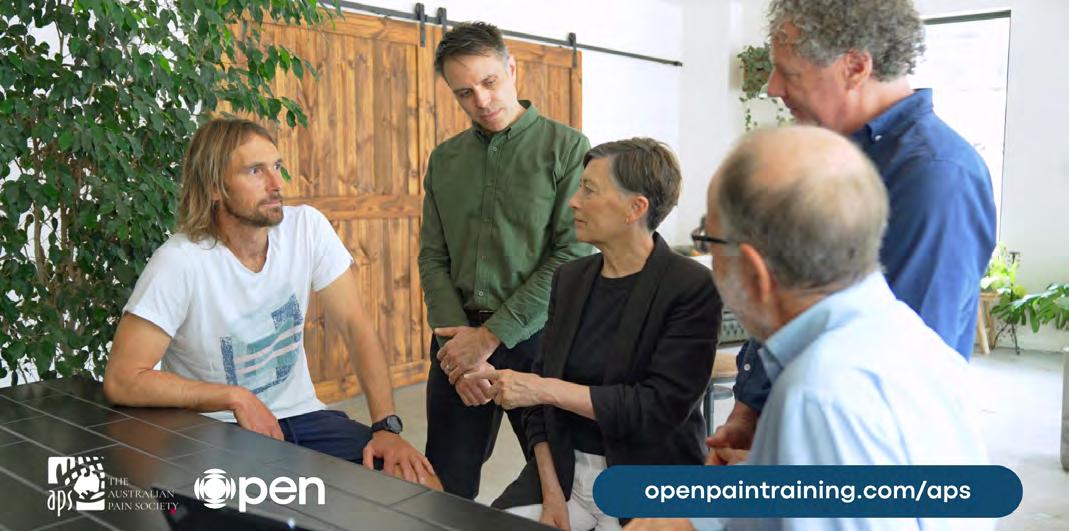
Jordan, A, Brook-Rowland, P, Noel, M, GauntlettGilbert, J. Journal of Pain (35) 2025.
Reviewer: Healey, A, Lord, SM, Wethered A, Williams K. Interdisciplinary team, Children’s Complex Pain Service, John Hunter Children’s Hospital, Newcastle, Awabakal Country, NSW, Australia. HNELHD-CCPS@health.nsw.gov
DOI: 10.1016/j.jpain.2025.105524 Online ahead of print.
Review of article
Study group
Qualified clinicians working in a specialised pain clinic treating patients who were experiencing chronic pain at the time of the study (N = 165). Most of the clinicians were based in the UK, identified as white, and were women (72.1%). The average age was 44.8 years (SD = 10.0), and they had an average of 12.7 years of clinical experience.
Aims
To survey specialist pain clinicians to understand what unhelpful messages their patients, living with chronic pain, had experienced.
Method
A qualitative survey design using a critical-realist epistemological approach was used to conduct reflexive thematic analysis (RTA). Researchers acknowledged the influence of broader clinical, cultural and discipline structures on clinician’s perspectives when interpreting the qualitative free text data.
The survey was distributed internationally between March 2020 and January 2021, however it was only available in English. Recruitment information was sent to pain clinics (paediatric and adult), pain listservs (email group communication) and shared on social media.
Participants were asked to share their experiences of pain messaging to individuals with chronic pain across four key areas: physical movement safety/unsafety, interpreting scan results, prognosis and future change, and
messaging about pain causes and diagnostic labels. They were also asked about pain messaging in relation to disciplines and how to improve clinical communication.
Along with RTA, Braun and Clarke’s six-step framework was used to ensure a rigorous and transparent approach to the analytic process1, 2.
RTA analysis derived five themes of unhelpful, prevalent and impactful messages received by patients, as identified by treating pain clinicians. Over 85% of clinicians rated the messages as present ‘sometimes’ to ‘very often’. Themes included:
1. “All in your head” – resulting in clients feeling invalidated, that their pain is somehow their fault or is a result of emotional distress, or pain is made up when test results come back normal.
2. “You are physically vulnerable” – causes fear about movement or about bodily damage. E.g. “crumbling spine”, “trapped nerves” and “worst MRI I have seen”.
3. “The elusive fix” – implying that there are medical cures for the pain and referring clients to find the answers fostering frustration, hopelessness and a sense of being ‘medically complex’.
4. “Inadequate pain explanations” – poorly explained diagnoses can increase fear. The authors gave the example of families, being given little context about diagnoses such as Complex Regional Pain Syndrome, turning to online information and misapplying adult outcomes to children.
5. “The end of the line” – fatalistic messaging about prognosis or the limits of pain services leaving clients feeling hopeless and disempowered. E.g. “you will end up in a wheelchair” and “you will have pain for the rest of your life”.
This was the first study to explore clinician perceptions of unhelpful messages given
to clients experiencing chronic pain. The authors concluded that unhelpful messages can significantly impact clients particularly by increasing anxiety and discouraging movement, and that improvements are needed in pain education.
The authors recommended that future studies should focus on combining both clinician and patient perspectives to further understand prevalent unhelpful messages. This would help create targeted training for pain clinicians to address these issues.
This paper provided valuable insights into the content of unhelpful language and messages that clients with chronic pain often encounter. It highlighted how these messages can influence treatment, both by considering what a patient may have already been told about their pain before seeking treatment and by underscoring the importance of clinicians offering validating, accurate, and comprehensive pain education/intervention.
The researchers acknowledged that their study was broad and exploratory, not guided by a specific framework, and they aimed to address this limitation by gathering a larger dataset. This exploratory approach allowed for genuine themes to emerge without structured influence. The researchers also recognised the potential for bias in data interpretation including their cultural backgrounds and experience only in Western healthcare systems.
The researchers did not differentiate between perceived unhelpful messages in participants from paediatric versus adult pain treatment settings. Perhaps future work could look at the impact of unhelpful pain messages across critical periods of development.
Take home messages
• The language that healthcare providers use when treating pain can be detrimental and have long-lasting impacts on clients suffering with chronic pain across the lifespan.
• Pain communication is a complex, dynamic and relational process, it is not the linear sharing of information. Clinicians should be clear, validating and knowledgeable when providing biopsychosocial explanations of chronic pain to clients and their families.
• Experienced pain clinicians from varying disciplines can offer useful insights into their patients’ experiences, integrating knowledge over time.
Declaration
We declare we have no conflicts of interest in writing this review.
References
1. Braun V, Clarke V. Thematic analysis: A practical guide. London Sage, 2022.
2. Braun V, Clarke V. Reflecting on reflexive thematic analysis. Qual Res Sport Exercise Health. 2019;11 (4):589-597. doi.org/10.1080/215967 6X.2019.1628806.

Boerner KE, Fox DA, Du L, Metzger DL, Marshall S, Moore EM, Narang P, Wharton MN, Oberlander TF. Pediatrics 2025; 155(2): e2024067035. Published Feb 2025.
Reviewer: Lord SM, Healey A, Lum A, Wethered A, Williams K. Interdisciplinary team, Children’s Complex Pain Service, John Hunter Children’s Hospital, Newcastle, Awabakal Country, NSW, Australia. HNELHD-CCPS@health.nsw.gov.au
DOI: 10.1542/peds.2024-067035
Review of article
Study group
Transgender and gender-diverse (TGD) youth aged 13-18 years with chronic pain (>3 months) recruited from clinical and community settings in Canada (N=19).
Aims
To explore the lived experience (LEx) of TGD youth with chronic pain.
Method
Qualitative study using semi-structured interviews.
Multiple recruitment strategies were used to recruit youth with diverse geographic, demographic, gender and pain-related experiences. Methods were tailored to TGD youth. For example, youth were offered a capacity assessment to enable them, where appropriate, to consent to participate in the study without involvement of their parent(s). Socioeconomic status (SES) measures were refined to differentiate between family SES and TGD youth SES, acknowledging TGD youth may not have access to their family’s resources.
An expert team with (Lex (lived experience), clinical and research experience in chronic pain and gender care, developed the interview guide applied in this study. Interviews were via videoconference. The sole interviewer was a white, cisgender-female postdoctoral clinical psychologist. Her role involved supporting
access to gender-affirming care and validating youths’ pain. Questions focused on experiences of pain, gender identity, the relationship between the two, and any intersecting identities.
BLOG WEB
Data from recordings and case notes were deidentified and analysed using reflexive thematic analysis, informed by existing theories. Iterative discussions with a LEx consultant helped centre TGD voices throughout.
Summary
From 33 youth who expressed interest, 22 were interviewed, with 19 retained who met all inclusion criteria. Demographic analysis confirmed diversity of sampling by ethnicity, remoteness, SES, gender identity, pain and comorbid mental health conditions.
The following themes are tabled with exemplars and discussed through high quality narrative:
1. Fighting for legitimacy: visibility, vulnerability, and validation.
a. Living a double life
b. The unwanted expert role
2. You can affirm your gender, or manage your pain, but not both
a. The embodied experience of gender
b. Adopting gendered pain behaviours to affirm identity and pain
c. The untapped potential of gender euphoria as a buffer against pain
3. Intersecting identities and social context
a. Pain and gender intersect with neurodiversity
b. Safe spaces and people that appreciate these intersections make a difference
TGD youth described living at the intersection of identities (gender, pain and others such as neurodiversity) that are questioned or invalidated. In the context of healthcare systems, spaces and providers that often feel unsafe, TGD youth find themselves having to be experts.
TGD youth reported that they uncomfortably educate providers on aspects of identity and gender-affirming care that intersect with pain management (e.g. chest binding, surgery, injections, social challenges of attending gyms and pools). The authors recommend future focus on resilience and resistance, posttraumatic growth and gender euphoria for potential therapeutic benefit.
We assessed this original qualitative study as high quality using the CASP (Critical Appraisal Skills Program) Checklist for Qualitative Research1 and JBI (Joanna Briggs Institute) Critical Appraisal Checklist for Qualitative Research2 .
Strengths: included: (i) Congruity between the philosophical perspective, methodology, reflexive thematic analysis and interpretation; (ii) Clear statement about primary researcher culture, gender, and their support role; (iii) Consent process that optimised participation even by those whose TGD identity remained concealed from parental consent providers; (iv) Partnering with Trans Care BC, codesign of interview guide and consulting with people with LEx throughout to privilege TGD perspectives; (v) Conclusions clearly flow from the analysis of study data.
Limitations: and unknowns: (i) A sole white cisgender-female interviewer may have biased interview delivery and responses, although her positionality within a gender-affirming service and confidentiality might have mitigated this; (ii) There was insufficient information about the other researchers and patient partner to assess positionality and influences; (iii) Although the sample was diverse, there was relative under-representation of transfeminine voices, necessitating further research to differentiate specific TGD-subgroup experiences; (iv) Although this study employed many elements of emancipatory research, it remains unclear how power imbalances were redressed in the design, interpretation and reporting stages. The study was also a very small sample size, which limits generalisability as it may not accurately represent the larger TGD youth population.
Impact: Subsequently authors published a ‘call to action’3 that reviews: TGD identity terms, best-practice assessment, as well as stigma, discrimination and other barriers to pain care, outcomes and research inclusion.
In July, the Australian Government released its Statement on Sex, Gender, Variations of Sex Characteristics and Sexual Orientation in Health and Medical Research4 which, although not specific to pain research, is applicable to research in our field henceforward.
Take home messages
Clinicians:
• Embed basic principles of respect, patientcentred and trauma-informed care.
• Learn about best-practice terminology, assessment and specific stressors and sources of pain experienced by TGD youth.
• Consider existing and potential sources of resilience and strength amongst TGD youth.
Researchers:
• Improve consideration of, and accurate data collection about, sex, gender, variations of sex characteristics and sexual orientation throughout the design, conduct, analysis, reporting, translation and implementation of pain research.
• Further research in this area is required to determine the generalisability to the TGD youth population.
Declaration
The reviewers have no potential conflicts of interest besides public hospital appointments in a children’s pain service.
References
1. https://casp-uk.net/casp-tools-checklists/qualitativestudies-checklist/ (accessed 3/4/2025)
2. https://jbi.global/sites/default/files/2019-05/ JBI_Critical_Appraisal-Checklist_for_Qualitative_ Research2017_0.pdf (accessed 3/4/2025)
3. Harrison LE, Boerner KE, Black W, Nelson S, Santos M, Simons LE, Wakefield EO, Warner JN, Wilson AC, Zajacova A. A call to action to integrate best practice assessment of sexual orientation and gender identity in pain research and clinical care. PAIN July 2025; 166: 988–993 https://journals.lww.com/pain/ fulltext/2025/05000/a_call_to_action_to_integrate_ best_practice.8.aspx
4. Australian Government, Dept of Health & Aged Care, NHMRC. Statement on Sex, Gender, Variations of Sex Characteristics and Sexual Orientation in Health and Medical Research. Published online 31/07/2025 https://www.health.gov.au/resources/publications/ statement-on-sex-gender-variations-of-sexcharacteristics-and-sexual-orientation-in-health-andmedical-research?language=en
Understanding what it is like to experience pain as you grow up: a poetic meta-ethnography
Toye F, Hannink E, Woolverton A., Ruiz MR, & Barker KL. The Journal of Pain 2025, 10-1097.
Reviewers: Lum A, Lord SM, Williams K. Children’s Complex Pain Service, John Hunter Children’s Hospital, Newcastle, Awabakal Country, NSW, Australia HNELHD-CCPS@health.nsw.gov.au
DOI: 10.1097/j.pain.0000000000003420
Review of article
Study group
The group of interest was young people ≤ 24 years with chronic or acute pain. The search yielded 189 studies including a total of 5,875 young people. Most were aged between 11 and 20 years old (full range 0-33 years).
Aims
To identify essential features of the emotional impact of child and adolescent pain experiences to facilitate the delivery of compassionate healthcare and policy.
Method
Systematic review of qualitative research in English language of young people with chronic or acute pain. The data synthesis was via poetic meta-ethnography approach, which included summarising primary research findings in active voice to extract meaning. Sorting codes were applied to form themes as well as refining themes in discussion with a young person with lived experience. The authors then used verbatim quotes from the qualitative data to co-produce poems that represent the seven themes that were identified in the Results. The authors screened 7,471 titles, read 302 full texts and included 189 reports of 177 unique qualitative research studies from mostly highincome English-speaking countries.
Summary of Results
The authors identified seven themes, outlined below with examples of lines from the verbatim poems.
The first theme was “Pain can be hard to bear”, which referred to the harrowing and exhausting
nature of pain. Pain is compared with torture, like a twisting knife, that cannot be relieved and saps energy from one’s reserve. Examples of the verbatim poem are “Like two fresh sores being sawed” and “As if I came back from battle. Although I didn’t go to war”.
“Pain is scary” was the second theme, which explored the fear and worry associated with pain. What was happening to them, what might happen, and what could have happened in different circumstances? The verbatim poem includes lines such as “I feel like I am in tall grass, enemies around me. I don’t know where they are, or when they are going to attack”.
The third theme, “Pain is constantly at the back of my mind”, describes pain as a constant presence in one’s mind that gets in the way of a “normal” childhood. It takes away the opportunities to be spontaneous or take risks as one line in the poem expressed - “I want to go blundering into things, like everyone else can”.
The fourth theme is “Pain makes me feel like I am outside alone”, highlighting how pain increases loneliness and robs its victims of friends and valued activities. It means missing out and having to watch from the sidelines. In the poem, young people with pain express their desires, “I try to call them. They’re busy”, but how their disappointment fosters a sense of hopelessness, “I don’t want to call. It is a waste of time”.
“Pain makes school a hard fit” is the fifth theme, which outlines the difficulties in getting to school and engaging with their subjects. Young people with pain are let down by school regulations and teachers who do not accommodate their needs. Even when they attend, their focus may not be on schoolwork, as exemplified in the poem - “Concentration is zero”, “I’m physically there but my mind is elsewhere. I am like part of the décor”.
The sixth theme is “Pain can hurt me deep inside”, which explores the pure emotional experience of pain. Young people describe sadness, envy, anger and guilt among many other emotions. In the poem, they ask themselves “Why me?”, and with a mixture of guilt, frustration, and hostility “I stare angrily at those who speak to me”.
The seventh and final theme is “Pain has changed me”. This theme acknowledges the grief and disappointment that comes with the pain and its impact on how they are viewed by others. The poem speaks to the desire for normality, “I want to be seen as me. Not “that one with the disease””.
The authors intentionally used poetry as an artform that could reach the audience on an emotional level and contribute to social action. Yet they also found that the voice of the young people in describing their pain was inherently poetic. The arts-based approach encourages readers to connect emotionally with the experiences shared by young people rather than to identify a criterion-based truth as is often the objective of scientific research. These poems can be used to start a conversation that seeks to create a shared understanding of the pain experience from which recovery can begin.
The study is limited in its review of only articles published in English language, with very few studies from lower- or middle-income countries. Data from both acute and chronic pain experiences were combined so not to lose sight of the phenomenological principles, yet evidence is clear that chronic pain is vastly different from acute. Lastly, drawing comparisons between the findings and wellknown examples of pain in literature, visual arts or music could have drawn the reader further into the artistic and emotional experience of the study.
• Poetic expression of pain is a form of communication that can instigate meaningfinding, empathy and compassion in healthcare providers and patients
• The experience of pain is wide-reaching in young people, affecting their thoughts, behaviours and emotions relating to friendships, identity, school, and normality.
The subjective nature of pain makes it an ideal topic of an arts-based investigation in the scientific inquiry of medicine. Although these themes are unlikely to be new to researchers and practitioners in pain, this research offers experts in the field an opportunity to reflect on how they understand pain.
• Pain researchers and practitioners may benefit from seeking to understand an experience, rather than seeking objective truth, when working with young people with pain
Declaration
The reviewers have no potential conflicts of interest besides public hospital appointments

Fechner R, Rogers K, Rogers L, Gollan A, Alcock M, Turbitt E, Verhagen AP, Pate JW. The prevalence of coexisting motor proficiency delay and chronic pain in children presenting to a tertiary pain service: a cross-sectional observational study. Clin J Pain. 2025;41(9): e1297.
Reviewers: Williams K, Healey A, Lord SM. Interdisciplinary team, Children’s Complex Pain Service, John Hunter Children’s Hospital, Newcastle, Awabakal Country, NSW, Australia. HNELHD-CCPS@health.nsw.gov.au
DOI: 10.1097/AJP.0000000000001297
Review of article
Study group
Ninety-four children and adolescents aged six–18 years (mean age 13.3 years) attending the Queensland Interdisciplinary Paediatric Persistent Pain Service (QIPPPS) were recruited. Two-thirds were female (66%). The average pain duration was 4.3 years, with mean age of onset at 9.6 years. Multisite pain was the most commonly reported presentation.
Aims
The study aimed to:
1. Identify the prevalence of motor proficiency delays in children presenting to a tertiary paediatric chronic pain service.
2. Explore relationships between motor proficiency, self-concept, and routine selfreport measures.
3. Test whether routinely collected electronic Persistent Pain Outcomes Collaboration (ePPOC) data could predict motor proficiency outcomes.
Method
This was a quantitative, cross-sectional observational study. Participants completed:
• Routine ePPOC questionnaires: Functional Disability Inventory (FDI), Paediatric Quality of Life Inventory (PedsQL), Brief Pain Inventory (BPI), Bath Adolescent Pain Questionnaire (BAPQ).
• Self-Perception Profile for Children/Adolescents.
• Bruininks–Oseretsky Test of Motor Proficiency, Second Edition (BOT-2), administered
face-to-face by trained physiotherapists or occupational therapists.
Multivariable regression models examined whether demographic and questionnaire data predicted BOT-2 scores.
Summary of Results
• Motor proficiency: 83% of participants scored below average in at least one subtest, and 41% showed global motor delay.
• Domains most affected: strength (44%), running speed and agility (37%), bilateral coordination (32%), and balance (31%). Fine motor integration was least affected (22%).
• Self-concept: adolescents reported lower selfperceptions across several domains compared with younger children.
• Prediction: routine demographic and ePPOC questionnaire data accounted for only 9% of the variance in BOT-2 scores, indicating poor predictive capacity.
Conclusions
Children with chronic pain frequently present with motor proficiency delays, which are not captured by routine self-report measures such as ePPOC questionnaires. The authors suggest incorporating norm-referenced motor assessments (e.g. BOT-2) into clinical practice to improve developmental formulations and guide rehabilitation planning.
Critique
We assessed this original quantitative crosssectional study as high quality using the CASP (Critical Appraisal Skills Programme) Checklist for Cross-Sectional Studies 1 and the JBI (Joanna Briggs Institute) Critical Appraisal Checklist for Analytical Cross-Sectional Studies 2
Strengths:
• Clearly defined aim – i.e. First Australian study to quantify motor proficiency challenges in a tertiary paediatric pain cohort.
• Recruited an appropriate clinical sample
• Use of a standardised, norm-referenced tool (BOT-2) alongside established self-report questionnaires.
• Demonstrates a significant blind spot in current assessment practices, highlighting that motor function is poorly captured by ePPOC.
Limitations:
• Cross-sectional design: BOT-2 was completed once only, preventing assessment of change over time or causal relationships.
• Conducted during 2020–2023, a period when COVID-19 restrictions may have reduced typical children’s activity levels; comparison with pre-pandemic BOT-2 norms could potentially overstate the relative impairment of the clinical cohort.
• The study did not report participants’ stage of treatment or previous exposure to rehabilitation, which may have influenced motor performance.
• This study has a small sample size which limits the generalisability of their results.
Impact and Insights:
• The findings highlight a reciprocal relationship between pain, motor development, and psychosocial wellbeing: pain reduces participation3 and leads to deconditioning. Further, motor delays themselves may heighten participation challenges4 and reinforce protective pain responses.
• Furthermore, motor difficulties are common across neurodevelopmental conditions such as autism, Attention Deficit/Hyperactivity Disorder (ADHD), and Developmental Coordination Disorder (DCD), often undiagnosed and overlooked in clinical care5. This suggests that undetected motor challenges may be a hidden factor contributing to pain and disability in complex paediatric cohorts.
• Notably, the average age of pain onset in this cohort (~nine years) coincides with the developmental transition from fundamental movement skills to more complex sportspecific skills. This raises the hypothesis that pain onset during this period may disrupt motor progression and peer participation, compounding functional and psychosocial difficulties. Conversely, undiagnosed motor delays may themselves contribute to pain onset at this critical stage. Although causality cannot be determined from this study, this possibility warrants prospective research.
• The BOT-2’s ability to identify specific motor domains (e.g. strength, balance, coordination) provides actionable information for tailoring interventions, supporting school-based adjustments. It also allows for the opportunity to reframe children’s self-concepts E.g. from “I’m bad at sport” to “I’m strong in some areas but need to build others.”
Clinicians:
• Routine ePPOC questionnaires are insufficient to detect motor proficiency challenges, which affect most children with chronic pain.
• Incorporating norm-referenced motor assessments such as BOT-2 can guide targeted rehabilitation, improve school liaison, and support positive reframing of ability.
• Addressing motor proficiency within a multidisciplinary framework may help break cycles of avoidance, low confidence, and disability.
Researchers:
• Longitudinal studies are needed to clarify whether motor difficulties precede pain onset or arise as a consequence.
• Future service evaluations could test the feasibility of incorporating BOT-2 (and selfperception measures) at intake and discharge to track functional change alongside ePPOC.
• Prospective studies of children with neurodevelopmental conditions may help clarify whether motor proficiency challenges are a risk factor for chronic pain.
• Replication with a larger sample is required to establish whether these findings are generalisable across children and young people experiencing chronic pain.
Declaration
We declare no conflicts of interest in relation to this review.
References
1. Critical Appraisal Skills Programme (CASP). CASP Checklist for Cross-Sectional Studies [Internet]. Oxford: CASP UK; 2018 [cited 2025 Sept 2]. Available from: https://casp-uk.net/casp-tools-checklists/
2. Joanna Briggs Institute. JBI Critical Appraisal Checklist for Analytical Cross-Sectional Studies [Internet]. Adelaide: JBI; 2017 [cited 2025 Sept 2]. Available from: https://jbi.global/critical-appraisal-tools
3. Groenewald CB, Tham SW, Palermo TM. Impaired school functioning in children with chronic pain: a national perspective. Clin J Pain. 2020;36(7):569–76. doi:10.1097/AJP.0000000000000828
4. Fong SSM, Lee VYL, Chan NNC, Chan RSH, Chak WK, Pang MYC. Motor ability and weight status are determinants of out-of-school activity participation for children with developmental coordination disorder. Res Dev Disabil. 2011;32(6):2614–23. doi:10.1016/j. ridd.2011.06.017
5. Verbecque E, Johnson C, Scaccabarozzi G, Molteni M, Klingels K, Crippa A. Motor difficulties in children with neurodevelopmental conditions: a cross-national study in Belgian and Italian children. Eur J Pediatr. 2025;184:174. doi:10.1007/s00431-025-06009-8
Thank you to APS members Dr Lewis Crawford, Dr Rebecca Robertson, Dr Noemi Meylakh, Professor Kevin Keay, and Professor Luke Henderson and their colleagues Dr Fernando Tinoco-Mendoza, Professor Paul Macey, Professor Kirsty Bannister, Professor Tor Wager, and Professor Vaughan Macefield for sharing the following recent publication.
Article first published online: 28 August 2025
Journal Reference: Lewis S. Crawford et al. ,Somatotopic organization of brainstem analgesic circuitry.Science389,eadu8846(2025).
DOI: 10.1126/science.adu8846
Abstract
Aims
This study aimed to assess whether analgesic responses evoked on specific parts of the body/ face are associated with activity changes in spatially separate sites within the human midbrain periaqueductal gray (PAG) matter and rostral ventromedial medulla (RVM). Previously, we demonstrated somatotopy in the PAG during acute noxious stimuli, aligning with preclinical evidence of a crude somatotopic architecture in the PAG. For the first time here show that both the recruitment of the PAG and RVM during non-pharmacologically driven reductions in perceived pain are also somatotopically organised.
Design
Using ultra-high field functional magnetic resonance imaging (fMRI), we assessed brainstem activity changes during pain and placebo stimulations. Placebo was elicited using a standard response conditioning model of falsely labelled placebo analgesic creams applied to participant’s cheek, forearm, and leg. The study was conducted over two days, to enable conditioning, reinforcement, and testing paradigms and strengthen the effects of expectation between the placebo substance and pain reduction in participants.
Setting
The study was conducted within a 7-Tesla magnetic resonance imaging scanner located at the Melbourne Brain Imaging Unit, University of Melbourne.
WEB
Subjects
A total of 93 pain-free participants were involved in the research. All participants completed the response conditioning and MRI scanning components with placebo analgesic creams placed on either their cheek, forearm, or shin.
Using an MRI-compatible heat probe, over two days we conditioned participants to believe a placebo cream, labelled and described as “lidocaine” was acting to reduce pain relative to a control cream labelled Vaseline. Despite participants believing through conditioning that both creams were receiving identical noxious input, in reality, we deceptively reduced the temperature when applied to the placebo ‘lidocaine’ – reinforcing the belief that this was an active analgesic. On the second day when inside the MRI, both creams truly received identical noxious input, with any difference in reported pain during this session encoding an individual’s placebo analgesia response. Perceived pain was recorded continuously at all times using a button box, and functional brain maps were recorded during noxious stimulation of either the control Vaseline or placebo lidocaine cream sites, placed on each of the three body locations. Images were then processed using MATLAB and custom toolboxes to isolate brainstem signal, with research questions targeting the midbrain PAG and RVM.
Results
We found approximately 50% of participants evoked a significant placebo analgesia response, irrespective of the body site receiving response conditioning. These responses did not interact with age nor sex assigned at birth. Through twosample t-testing and linear regression analyses, we identified unique points within both the
PAG and RVM that showed altered activation patterns between placebo responders and non-responders, or showed linear relationships with the mean difference in pain between the two cream sites when both received identical temperature stimulation (i.e. placebo-ability). In placebo responders, we mapped the precise anatomical locations where signal change was most extreme in either the PAG and RVM, revealing a unique somatotopic pattern such that in both nuclei, signal change during face placebo was most rostral, and for body, both arm and leg, more caudal. This same anatomical pattern was conserved when considering non-responders, but significantly different in anatomical location only in those that mounted a significant endogenous pain modulatory effect. Moreover, we determined in subsequent behavioral testing that the analgesia we produce through this model is site-specific, as reduced pain was not experienced on alternate body sites separate to where response conditioning had taken place, even with an unknown cream applied which was described to participants to be either the control or placebo analgesic cream.
Conclusions
This study provides direct evidence for a somatotopic brainstem architecture involving
the PAG-RVM circuitry, specifically leveraged for producing endogenous changes in perceived pain. Specifically, we identified signal changes primarily within the lateral PAG (lPAG), which, combined with our behavioral assessment of this analgesia’s site specificity, promotes that this is indeed a non-opiate mediated placebo analgesia at the level of the brainstem PAG.
With a growing interest in how we may in the future leverage non-invasive brain stimulation paradigms to produce positive effects of chronic pain symptoms, these findings reveal the precise locations within the brainstem which correspond to the greatest perceived relief from pain. Given chronic pain is rarely experienced across the entire body, and rather confined to an afflicted body site, these findings reveal there may be optimal stimulation targets, either these brainstem sites or cortical areas directly projecting to these sites, which may be most optimal to relieving a patient’s own unique pain.
Declaration
This work was funded by a National Health and Medical Research Council (NHMRC) grant received by Professors Henderson and Keay –ID1130820.
Pharmacotherapy
Thank you to APS member Michael Ferraro and his colleagues Nadia Soliman, Prof Xavier Moisset, Daniel Ciampe de Andrade, Ralf Baron, Jolette Belton, Prof David L H Bennett, Margarita Valvo, Prof Patrick Dougherty, Prof Ian Gilron, Aki J Hietaharju, Koichi Hosomi, Prof Peter R Kamerman, Harriet Kemp, Prof Elena K EnaxKrumova, Ewan McNicol, Prof Theodore J Price, Prof Srinivasa N Raja, Prof Andrew S C Rice, Prof Blair H Smith, Fiona Talkington, Andrea Truini, Jan Vollert, Prof Nadine Attal, Prof Nanna B Finnerup and Prof Simon Haroutounian for sharing the following recent publication.
Article first published online: May 2025
Journal Reference: Lancet Neurology 2025; 24: 413–28
DOI: https://doi.org/10.1016/S14744422(25)00068-7
Abstract
Objective
To evaluate the efficacy and safety of pharmacological and neuromodulation treatments for neuropathic pain and inform updated recommendations from the Neuropathic Pain Special Interest Group (NeuPSIG) of the International Association for the Study of Pain.
Design
Systematic review and meta-analysis of randomised, double-blind, placebo-controlled trials.
Subjects
Adults with neuropathic pain. Trials enrolling patients with complex regional pain syndrome, fibromyalgia, and mixed pain conditions were excluded.
Methods
Searches were conducted across PubMed, EMBASE, ClinicalTrials.gov, and the WHO International Clinical Trials Registry (up to 12 Feb 2024). Eligible studies were ≥3 weeks in duration and included ≥10 participants per group. Primary outcomes were pain intensity (≥50% or ≥30%
BLOG WEB
reduction, or at least moderate pain relief) and treatment withdrawals due to adverse events. Random effects meta-analyses were used to calculate risk differences to estimate number needed to treat (NNT) and number needed to harm (NNH). Risk of bias and certainty of evidence were assessed using Cochrane risk of bias tool 2 (RoB 2) and Grading of Recommendations Assessment, Development and Evaluation (GRADE). Recommendations were developed through using the GRADE framework, incorporating efficacy, harms, accessibility and cost.
Results
A total of 313 trials (n=48,789 participants; 284 pharmacological, 29 neuromodulation) were included. Tricyclic antidepressants (NNT 4.6 [95% CI 3.2–7.7], NNH 17.1 [11.4–33.6]), α2δ-ligands (NNT 8.9 [7.4–11.1], NNH 26.2 [20.4–36.5]), and serotonin–noradrenaline reuptake inhibitors (NNT 7.4 [5.6–10.9], NNH 13.9 [10.9–19.0]) had moderate certainty evidence and were strongly recommended as first-line treatments. Capsaicin 8% patches (NNT 13.2 [7.6–50.8], NNH 1129.3 [135.7–∞]), capsaicin cream (NNT 6.1 [3.1–∞], NNH 18.6 [10.6–77.1]), and lidocaine 5% plasters (NNT 14.5 [7.8–108.2], NNH 178.0 [23.9–∞]) were weakly recommended secondline options. Opioids (NNT 5.9 [4.1–10.7], NNH 15.4 [10.8–24.0]), botulinum toxin A (NNT 2.7 [1.8–5.1], NNH 216.3 [23.5–∞]), and repetitive transcranial magnetic stimulation (NNT 4.2 [2.3–28.3], NNH 651.6 [34.7–∞]) were weakly recommended as third-line therapies due to lower certainty of benefit and/or higher risk of harm.
Conclusions
Despite a large body of new evidence, effects of pharmacological and neuromodulation interventions for neuropathic pain remain modest, and the balance of benefit and harm varies widely.
Discussion
This review provides a rigorous synthesis of neuropathic pain treatments and highlights the importance of tailoring therapy based on patient preference, safety, accessibility, and cost. It also identifies priority areas for future research, including combination therapies and high-quality trials of neuromodulation.
Declaration
Thank you to APS member Dr Joshua Pate and their colleagues Emily Dowling, Dr Laura Simons, Dr Alia Crum, Dr Joseph Chilcot, Dr Helen Laycock, Dr Whitney Scott and Dr Lauren Heathcote for sharing the following recent publication.
Article first published online: 01 July 2025
Journal Reference: Dowling, Emily J. MSc; Simons, Laura E. PhD; Crum, Alia J. PhD; Pate, Joshua PhD; Chilcot, Joseph PhD; Laycock, Helen C. MBSS, PhD; Scott, Whitney PhD; Heathcote, Lauren C PhD. Pain Acceptance in Adolescent Chronic Pain: Do Body Mindsets Play a Role? The Clinical Journal of Pain
DOI: https://doi.org/10.1097/ AJP.0000000000001307
Abstract
Objective
Pain acceptance predicts better quality of life, physical functioning, and treatment outcomes in youth with chronic pain. However, we know little about the factors that promote pain acceptance in youth. This study investigated body mindsets and their associations with facets of pain acceptance, specifically pain willingness and activity engagement, in adolescents with chronic pain.
Methods
The sample comprised 102 adolescents with chronic musculoskeletal pain (aged 8-17; 72.3% female, 49.5% Caucasian/White) attending a tertiary pain clinic. Hierarchical linear regression
analyses examined associations of body mindsets with pain acceptance controlling for demographic factors, pain and mental health symptoms, and basic functioning.
Results
There was significant variation in the mindsets that adolescents with chronic pain held about their bodies – some endorsed the mindset that their Body is an Adversary, others endorsed the mindsets that their Body is Responsive or Body is Capable. Hierarchical linear regression analyses indicated that endorsing the mindset that their Body is an Adversary was associated with lower willingness to experience pain, while endorsing the mindset that their Body is Capable was associated with greater engagement in valued activities despite pain, even after accounting for demographic factors, pain characteristics, and basic functioning. Together, all three mindsets explained 6.6-26.8% unique variance in pain acceptance.
Discussion
Body mindsets are significantly associated with pain acceptance in youth with chronic pain even after controlling for pain characteristics and basic functioning. Experimental research should investigate whether body mindsets are modifiable in this population and whether they could represent interventional targets fostering pain acceptance.
Declaration
JWP has received speaker fees for presentations on pain and rehabilitation. He receives royalties for educational children’s books.
The Australian Pain Society (APS) is keen to share publications from our members with their colleagues via our eNewsletter. If you’ve had an article accepted or published recently, please contact our Assistant Editor Joanne Harmon via the APS Secretariat (aps@apsoc.org.au) with the title, authors, and reference (i.e., journal, volume, and DOI) of your article and request the submission template. We would love it if you also supply a short commentary (300 words max) to give our readers the gist of the article.
Developed by the Australian Pain Society in collaboration with the National Ageing Research Institute, this FREE ‘train-the-trainer’ pain management program is for use by sta in both residential aged care facilities and organisations that provide aged care in the community, as well as NDIS providers.
Eight (8) painACT modules: One for the trainer called “How to use the painACT trainer program”, and seven modules for the trainer to train their sta :
Introduction to pain in aged
Impact
Conversations
Source

Developed by the Australian Pain Society in collaboration with the National Ageing Research Institute, this FREE ‘train-the-trainer’ pain management program is for use by sta in both residential aged care facilities and organisations that provide aged care in the community, as well as NDIS providers.
For more information:
painACT is available on the Australian Pain Society website and consists of: > trainer learning module documents > short training video clips, and > participant handout material apsoc.org.au/painACT-Online-Learning
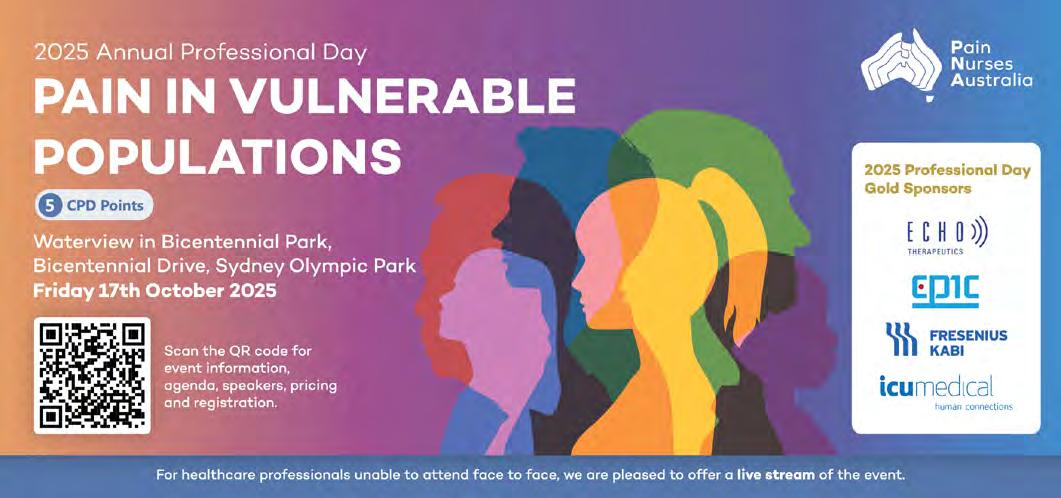
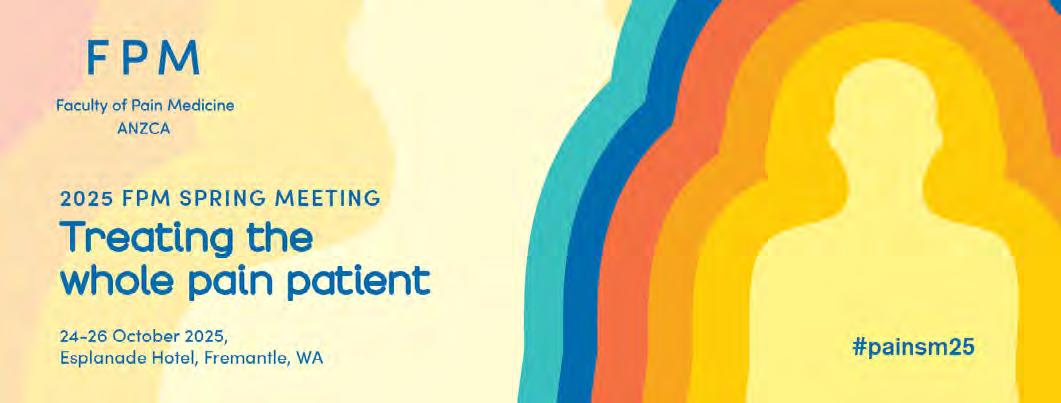




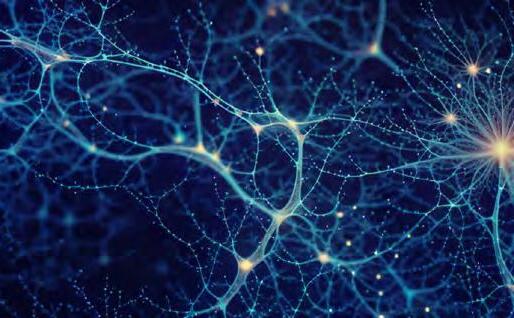

EXPRESSIONS OF INTEREST ONLINE: www.dccam.com.au/aps2026
Registrations open 18 November 2025
IMPORTANT DEADLINES
Topical Sessions 2 September 2025
Rising Star Award 7 October 2025
Free Papers & Posters 28 October 2025
Early Bird Registration 24 February 2026
Professor Yves De Koninck Yves De Koninck is Professor of Psychiatry and Neuroscience at Université Laval
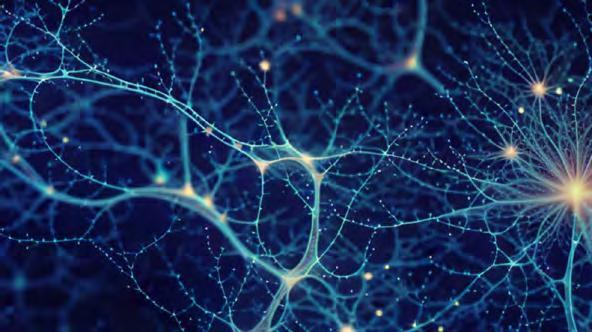
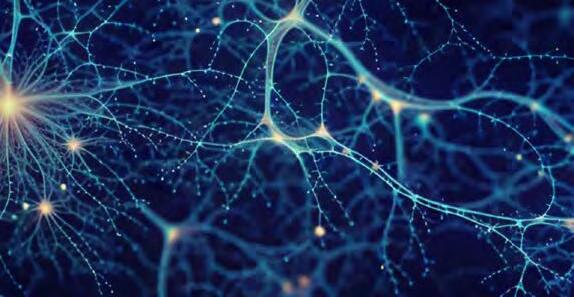
and interdisciplinary approach to study the pathophysiology of neuromusculoskeletal conditions with the ultimate goal to improve management for patients.
For sponsorship and exhibition opportunities or more information please contact the APS Conference Secretariat: DC Conference & Association Management (DCC&A) P: 61 2 9954 4400 E: apsasm@dccam.com.au
> Apply for IASP Early Career Research Grants of up to USD20,000 by 16 October 25
Other items of interest for our members:
> Latest opioid data from the Australian Bureau of Statistics: Opioid induced deaths in Australia.
> Australia’s annual overdose report 2025 from the Pennington Institute
> Australian Atlas of Healthcare Variation Series: This series explores how healthcare use in Australia varies depending on where people live. It investigates reasons for variation that may be unwarranted, and provides specific achievable actions to reduce unwarranted variation
> ePPOC: electronic Persistent Pain Outcomes Collaboration: The electronic Persistent Pain Outcomes Collaboration (ePPOC) is an Australasian initiative that aims to improve the quality of care and outcomes for people who experience chronic pain.
> PainHEALTH: painHEALTH‘s aim is to help health consumers with musculoskeletal pain access reliable, evidence-based information and tips to assist in the co-management of musculoskeletal pain. painHEALTH is an initiative of the Department of Health, Western Australia
> Stanford University CHOIR: CHOIR Collaborative Health Outcomes Information Registry
> Opioid Podcasts for GPs: These podcasts are produced by David Outridge GP, and FAChAM Trainee as a project under the auspices of Dr Steven Kelly Staff Specialist in Addiction Medicine, Kullaroo Clinic Gosford. A weekly series from the Hunter Postgraduate Medical Institute (University of Newcastle)
> Airing Pain: Pain resources via an online radio show produced by Pain Concern, a UK registered Charity
> Indigenous Resources: Webpage on the APS website aggregating Indigenous resources
> Tame the Beast: Free educational tool that aims to inspire research-based action in the treatment of chronic pain
> Codeine information hub
NSW Agency for Clinical Innovation resources:
> Brainman and Pain Tool Kit translations
> Pain Management Resources
> Quicksteps to Manage Chronic Pain in Primary Care
> Built into Quicksteps: “How to de-prescribe and wean opioids in general practice”
> A list of helpful apps for consumers and clinicians
> Chronic Pain in the ED
07-09 October 2025
Australia & New Zealand Musculoskeletal Clinical Trials Network
ANZMUSC 2025 Scientific Meeting
University of Queensland City Campus and Customs House, Brisbane, QLD
08-09 October 2025
National Rural Health Alliance, Australian Rural Health Education Network & Federation of Rural Australian Medical Educators
10th Rural & Remote Health Scientific Symposium
Alice Springs Convention Centre, Alice Springs, NT
13-15 October 2025
Australian Association of Psychologists Inc AAPi Conference 2025
Grand Hyatt, Melbourne, VIC
17 October 2025
Pain Nurses Australia
2025 Annual Professional Day - Pain in Vulnerable Populations
Waterview in Bicentennial Park, Sydney Olympic Park, Sydney, NSW
23-25 October 2025
Australian Physiotherapy Association Scientific Conference
Adelaide Convention Centre, Adelaide, SA
24-26 October 2025
Faculty of Pain Medicine (FPM)
2025 FPM Spring Meeting
Esplanade Hotel, Fremantle, WA
14-16 November 2025
Royal Australian College of General Practitioners
GP25
Brisbane Convention and Exhibition Centre, Brisbane, QLD
19-21 November 2025
Australian & New Zealand Spinal Cord Society
ANZCoS 2025: Rivers of Innovation
Brisbane Convention and Exhibition Centre, Brisbane, QLD
18-21 March 2026
New Zealand Pain Society (NZPS)
NZPS26 - The Right Fit
Christchurch Town Hall, Otautahi Christchurch, NZ
17-18 April 2026
Pain in Child Health (PICH)
PICH2GO Adelaide 2026
University of South Australia, Adelaide, SA
19-22 April 2026
Australian Pain Society
2026 Australian Pain Society 46th Annual Scientific Meeting
Adelaide Convention Centre, Adelaide, SA
Ms Thuy Bui Pharmacy
Mrs Sumayya Falke Physiotherapy
Mr David Gryn Physiotherapy
Mr Nicholas Samios Pharmacy
Vision:
All people will have optimal pain management throughout life.
Purpose:
The Australian Pain Society is a multidisciplinary association whose purpose is to advance pain management through education, research, and advocacy for transformational improvements in clinical care.
Priorities:
In order to achieve our purpose, the Australian Pain Society will provide:
> Membership
> Research
> Education
> Services and resources
> Good governance and operations
> Advocacy



President:
Mrs Bernadette Smith
Psychology Plus
South Burnie TAS
Tel: 03 6431 9959 Fax: 03 6431 9950
President-Elect:
Dr Laura Prendergast
Persistent Pain Management Service
Northern Health
Broadmeadows VIC 3047
Tel: 03 8345 5166 Fax: N/A
Work days Mon & Thu
Treasurer & Interim Secretary
Dr Duncan Sanders
Pain Management Unit,
Sydney Medical School, University of Sydney / Managing Pain Clinic and E3 Physio
Gold Coast QLD
Tel: 07 5620 1234 Fax: 07 3009 0420


ACT Director:
Mr Anjelo Ratnachandra
Beyond Pain Pty Ltd
Belmont VIC 3216
Tel: 0400 202 803 Fax: N/A
NSW Director:
Dr Connor Gleadhill
Department of Health and Aged Care
Primary Care Division
Newcastle NSW 2038
Tel: 0405 203 661 Fax: N/A






NT Director:
Dr Amelia Searle
Flinders Medical Centre Pain
Management Unit
Bedford Park SA 5042
Tel: 08 8204 5499 Fax: 08 8204 5440
QLD Director:
Mrs Karla Wright
Fernvale Priceline Pharmacy
Fernvale QLD 4306
Tel: 07 5427 0695 Fax: 07 5427 0698
SA Director:
Ms Heather Gray
Royal Adelaide Hospital
Adelaide SA 5000
Email: heather.gray@sa.gov.au
TAS Director:
Mr Sinan Tejani
Launceston General Hospital
Launceston TAS 7250
Tel: 0469 967 841 Fax: N/A
VIC Director:
Mrs Alison Sim
10 South Sports Medicine
Geelong VIC 3220
Tel: 0488 988 315 Fax: N/A
WA Director:
Ms Jacintha Bell
Lifeworks Occupational Therapy
Mount Lawley WA 6050
Tel: 0451 178 880 Fax: 08 6323 3329





Immediate Past President:
Mrs Joyce McSwan
Gold Coast Primary Health Network
Persistent Pain Program, QLD and PainWISE
Tel: 0412 327 795 Fax: 07 3539 9801
SPC Chair:
Professor Kevin Keay
Department of Anatomy
University of Sydney
Sydney NSW 2006
Tel: 02 9351 4132 Fax: 02 9351 2817
IASP Liaison:
Professor Fiona Blyth AM
Sydney School of Public Health
Faculty of Medicine and Health
University of Sydney
Camperdown NSW 2006
Email: Fiona.blyth@sydney.edu.au
Communications Coordinator:
Mrs Bernadette Smith
Psychology Plus
South Burnie TAS 7320
Tel: 03 6431 9959 Fax: 03 6431 9950
Newsletter Editor:
Clinical A/Prof Kylie Bailey
Sagacity Services
Mount Hutton NSW 2290
Tel: 0447 905 085



Newsletter Assistant Editor: Dr Joanne Harmon
School of Clinical and Health Sciences
University of South Australia
Adelaide SA 5000
Tel: 08 8302 1442
Grant Selection
Subcommittee Co-Chairs:
Emeritus Professor Maree Smith AC
Centre for Integrated Preclinical Drug Development
University of Queensland St Lucia QLD 4072
Professor Luke Henderson
Anatomy & Histology, School of Medical Sciences
Brain & Mind Centre
University of Sydney Camperdown NSW 2006

Secretariat:
DC Conference & Association
Management Pty Ltd
PO Box 637
North Sydney, NSW 2059
Tel: 02 9016 4343
Email: aps@apsoc.org.au
Website: apsoc.org.au